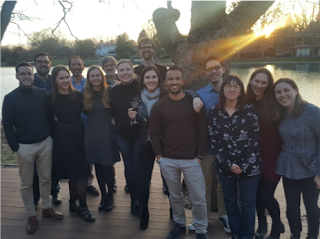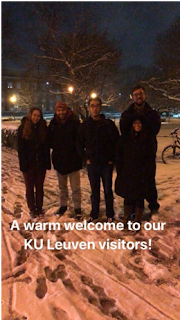By Rafael Rodríguez
This blog post was written for the course "Current Issues in Global and EU Affairs", which took place from February 12-April 30, 2018.
It is a well-known fact that defense and security remain some of the main scopes of the transatlantic relations between the European Union (EU) and the United States (US). Yet, there are many different areas that cover other fundamentals of these relations, such as education.
Education, and more specifically, the Internationalization of Higher Education, has had a tremendous growth in terms of the number of educational institutions tailoring efforts to attract the international market of students. Quacquarelli Symonds (QS), best known for publishing the QS World University Rankings, state in their website that international student enrollment has grown exponentially to reach five million between 1990 and 2014; by 2025, this number is expected to reach 8 million globally (West, 2018). The EU’s marketing efforts to promote the region as a single destination for international students since 2007, added to the Bologna Process, which ensured comparability in the standards and quality of higher-education qualifications. This causes the US to stay behind only with an economic approach where higher standards of education go mainly along with some of the highest tuition fees in the world, while the EU set strategies to market EU educational institutions not only for their affordable tuition prices but for their research and internationalization interests.
Yet, the internationalization of HE has been strengthened by collaborative partnerships among educational institutions across borders in the last couple of decades (Stiasny & Gore, 2012). This is due to an increasing global significance of cosmopolitan students and universities. More specifically, Stiasny and Gore (2012) mention that these transnational and transatlantic partnerships allow international and even local students to become "more knowledgeable, more focused, clearer about their needs and their wishes, more sophisticated and more international" (p. 43). Furthermore, through international academic experiences, the labor market is better qualified and competitive, and as a result, countries on both sides of the Atlantic, now have the opportunity to obtain better-trained professionals who can support further research and development and ensure a stronger nation for future international relations. This double benefit for professionals and for the nation-state is a way to understand why education and student mobility is one of the phenomena that has been strengthened with globalization, and how important it is to explore this aspect with reference to transatlantic bilateral relations in more depth. In other words, if more students go abroad, a wide range of needs and demands at a personal, institutional and even national level can be covered (Macready & Tucker, 2011).
With the experience that the EU has gathered within more than a decade of promoting the entire region as a single destination for international students, the transatlantic cooperation between Higher Education institutions in the EU and the US starting in 1993 is facing new challenges (De Wit, 2015). While those transatlantic relations initiated and have been maintained at a bilateral level, a new agreement should focus on a multilateral one in which the EU integration can be better matched. The knowledge economy has made that Universities become oriented towards a regime of academic capitalism institutes. Students have been turned into consumers who prioritize the outcome of education, like acknowledgement, satisfaction, pride of belonging to the university, etc. rather than the sole purchase of the program.
In a nutshell, the new era of information and the trade of knowledge as a commodity characterize the importance that the internationalization of Higher Education represents for the transatlantic relations among global competitors like the EU and the US.
---
References
De Wit, H. (2015). A decade of transatlantic cooperation.
International Higher Education, (35).
Macready, C., & Tucker, C. (2011). Who goes where and why? an overview and analysis of global educational mobility. New York: Institute of International Education.
Stiasny, M. (Ed.). (2012).
Going global: the landscape for policy makers and practitioners in tertiary education. Howard House: Emerald.
Study in Europe. (n.d.). Retrieved April 23, 2018, from
https://ec.europa.eu/education/study-in-europe_en
West, J. (2018, February 9). Growth of International Student Numbers in Higher Education. Retrieved April 17, 2018, from
http://www.qs.com/growth-international-students-higher-education/




